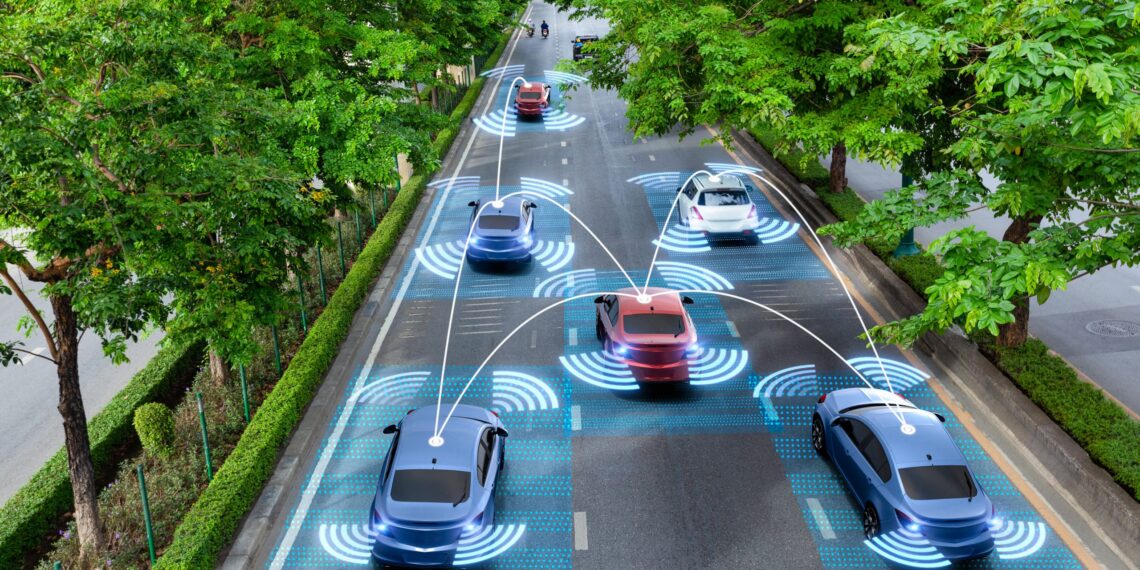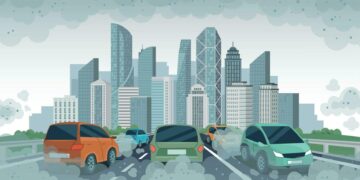Understanding the Levels of Autonomy: From Assistance to Full Automation
Autonomous driving technology is rapidly evolving, and it’s important to understand the different levels of automation that define its progress. These levels, standardized by SAE International, range from basic driver assistance to complete self-driving capabilities, each offering varying degrees of vehicle control and human intervention.
1. Level 0: No Automation
At Level 0, the driver is entirely in control of the vehicle. There are no automated features, although the vehicle may have warning systems. The driver handles all aspects of driving, including steering, acceleration, and braking. This is the most basic level, representing traditional driving with no autonomous assistance.
2. Level 1: Driver Assistance
Level 1 introduces some automated assistance features like Adaptive Cruise Control (ACC) or Lane Keeping Assist (LKA). However, the driver must remain attentive and ready to take control at any time. These systems only assist with either steering or speed, but not both simultaneously. It’s essentially a helping hand, not a replacement for the driver.
3. Level 2: Partial Automation
Level 2 combines steering and acceleration/deceleration support under certain conditions. Examples include Tesla’s Autopilot or Cadillac’s Super Cruise. The driver must still monitor the driving environment and be prepared to intervene. While the system can handle some driving tasks, it’s not fully self-driving. The driver is responsible for safe operation.
4. Level 3: Conditional Automation
Level 3 allows the vehicle to handle most driving tasks in specific environments, such as highways. The driver does not need to constantly monitor the system but must be ready to take over when prompted. This level requires reliable performance and handover mechanisms. However, it is not “eyes-off, mind-off” driving, as the driver must remain available.
5. Levels 4 and 5: High and Full Automation
Level 4 represents high automation, where the vehicle can handle all driving tasks in specific conditions (e.g., urban areas). Level 5 achieves full automation, with the vehicle capable of handling all driving tasks in all conditions. These levels require no human intervention. Level 5 vehicles may not even have steering wheels or pedals.
The Role of LiDAR and Camera Sensors in Autonomous Vehicle Perception
LiDAR and camera sensors are the primary sensory organs of autonomous vehicles, enabling them to perceive and understand their surroundings. This fusion of technologies allows for a more robust and reliable perception system, crucial for safe navigation.
| Sensor Type | Advantage | Disadvantage | Typical Application | Data Source |
|---|---|---|---|---|
| LiDAR | Accurate 3D mapping, works well in low light | Expensive, susceptible to weather conditions | Obstacle detection, mapping | Velodyne, Ouster |
| Camera | High resolution, color information, inexpensive | Performance degrades in poor lighting, limited depth information | Traffic sign recognition, lane detection | Mobileye, NVIDIA |
Data source: Industry reports, 2024.
1. LiDAR: The 3D Mapper
LiDAR (Light Detection and Ranging) uses laser beams to create a detailed 3D map of the vehicle’s surroundings. It measures the distance to objects by calculating the time it takes for the laser light to return to the sensor. LiDAR excels in providing accurate depth information, making it particularly useful for obstacle detection and avoidance, even in low-light conditions. However, LiDAR sensors can be expensive and their performance can be affected by adverse weather conditions like heavy rain or snow.
2. Camera: The Visual Interpreter
Cameras provide high-resolution color images, enabling autonomous vehicles to “see” the world much like humans do. They are essential for tasks such as traffic light recognition, lane keeping, and reading road signs. The wealth of visual information cameras capture complements LiDAR data, adding context and detail to the vehicle’s understanding of its environment. While cameras are relatively inexpensive, their performance can be significantly impacted by poor lighting and weather conditions.
3. Sensor Fusion: A Synergistic Approach
Autonomous vehicles don’t rely solely on one type of sensor. Instead, they employ sensor fusion, which combines data from LiDAR, cameras, and other sensors to create a comprehensive and reliable perception system. This approach mitigates the limitations of individual sensors and leverages their strengths. For example, LiDAR’s precise depth information can be combined with camera’s color imagery to accurately identify and classify objects, even in challenging conditions.
Vehicle-to-Everything (V2X) Communication: Enhancing Traffic Interaction
V2X technology enables vehicles to communicate with each other and their surroundings, paving the way for safer and more efficient transportation systems. It’s a crucial component in the evolution of autonomous driving.
1. Understanding V2X Technology
V2X, short for Vehicle-to-Everything, encompasses various communication methods. These include Vehicle-to-Vehicle (V2V), Vehicle-to-Infrastructure (V2I), Vehicle-to-Pedestrian (V2P), and Vehicle-to-Network (V2N). V2V allows cars to share data like speed and location, while V2I connects vehicles to traffic signals and road sensors. V2P alerts drivers to nearby pedestrians, and V2N enables cloud-based services. These interactions create a connected ecosystem, providing real-time information to enhance safety and optimize traffic flow.
2. Benefits of V2X in Autonomous Driving
V2X significantly enhances the capabilities of autonomous vehicles. By receiving data from other vehicles and infrastructure, autonomous cars can “see” beyond their sensors’ range, anticipating potential hazards and making informed decisions. This leads to improved safety by reducing accidents caused by blind spots or sudden stops. Moreover, V2X facilitates smoother traffic flow, reducing congestion and improving fuel efficiency. It allows autonomous vehicles to coordinate their movements, optimizing routes and minimizing delays.
3. Challenges and Future Directions
Despite its potential, V2X faces challenges in implementation. Standardizing communication protocols across different manufacturers is crucial for seamless interaction. Cybersecurity is also a major concern, as V2X systems must be protected from hacking and data breaches. Furthermore, widespread adoption requires significant investment in infrastructure upgrades and vehicle retrofitting. The future of V2X involves integrating it with other technologies like 5G and edge computing to enable faster and more reliable communication.
Adaptive Cruise Control and Its Impact on Driving Experience
Adaptive Cruise Control (ACC) is more than just cruise control; it’s a smart system that adjusts your car’s speed to maintain a safe following distance from the vehicle ahead, enhancing driving safety and comfort. This technology represents a significant step towards fully autonomous driving.
1. How Adaptive Cruise Control Works
ACC uses sensors, such as radar or cameras, to monitor the distance and speed of the vehicle in front. If the lead vehicle slows down, ACC automatically reduces your car’s speed to maintain a pre-set following distance. If the road ahead is clear, ACC accelerates back to the set speed. This automated speed adjustment reduces the driver’s workload, particularly on highways.
2. Benefits of Using Adaptive Cruise Control
ACC offers several key benefits. It reduces driver fatigue by automating speed adjustments, especially during long drives. It can also improve safety by maintaining a consistent following distance, reducing the risk of rear-end collisions. Furthermore, ACC can contribute to smoother traffic flow by reacting more quickly and consistently than a human driver.
3. Limitations and Considerations
Despite its advantages, ACC is not foolproof. It may struggle in heavy rain, snow, or fog, which can impair sensor visibility. It’s crucial for drivers to remain attentive and be prepared to take control when necessary. Also, ACC’s performance can vary depending on the make and model of the car, as well as the specific driving conditions.
The Future of Driver Assistance Systems in Autonomous Driving
Driver Assistance Systems (DAS) are evolving rapidly, paving the way for full autonomy. These systems, designed to enhance safety and convenience, are becoming increasingly sophisticated, blurring the lines between driver assistance and self-driving capabilities.
1. Enhanced Safety Features
Advanced Driver Assistance Systems (ADAS) are incorporating more sophisticated sensors and algorithms to prevent accidents. Features like automatic emergency braking (AEB), lane keeping assist (LKA), and blind-spot detection are becoming standard. The focus is shifting towards proactive safety measures that anticipate and mitigate potential hazards before the driver can react. For example, some systems now use predictive algorithms based on real-time traffic data and historical accident patterns to warn drivers of potential dangers ahead.
2. Integration of Artificial Intelligence
Artificial intelligence (AI) is playing a crucial role in enhancing the capabilities of DAS. AI algorithms are used to process vast amounts of data from sensors, cameras, and radar to make more informed decisions. This allows for more accurate object detection, improved path planning, and better adaptation to changing driving conditions. AI also enables features like adaptive cruise control (ACC) to function more smoothly and naturally, mimicking human driving behavior.
3. Over-the-Air Updates and Personalization
The future of DAS includes the ability to receive over-the-air (OTA) updates, allowing for continuous improvement and the addition of new features without requiring a visit to a service center. This also enables personalization of DAS settings based on individual driver preferences and driving styles. For example, a driver could customize the sensitivity of the lane keeping assist system or the aggressiveness of the adaptive cruise control.
4. Bridging the Gap to Full Autonomy
DAS are serving as a crucial stepping stone towards full autonomous driving. As these systems become more advanced and reliable, they are gradually reducing the need for human intervention. The ultimate goal is to create a seamless transition from driver assistance to full self-driving capabilities, where the vehicle can handle all aspects of driving in most situations. This transition will require further advancements in sensor technology, AI algorithms, and regulatory frameworks.
Q&A
Question 1: What are the different levels of autonomy in autonomous driving, as defined by SAE International?
Answer: SAE International defines six levels of driving automation, ranging from Level 0 (no automation, the driver is in complete control) to Level 5 (full automation, the vehicle handles all driving tasks in all conditions without human intervention). Levels 1-3 represent increasing levels of driver assistance, with the driver still responsible for safe operation, while Levels 4 and 5 represent high and full automation, respectively.
Question 2: What are the main advantages and disadvantages of LiDAR and camera sensors in autonomous vehicle perception?
Answer: LiDAR offers accurate 3D mapping and works well in low light, but is expensive and susceptible to weather. Cameras provide high-resolution color images and are inexpensive, but their performance degrades in poor lighting and they offer limited depth information. Sensor fusion, combining both, mitigates these individual limitations.
Question 3: How does Vehicle-to-Everything (V2X) communication enhance autonomous driving?
Answer: V2X allows vehicles to communicate with each other (V2V), infrastructure (V2I), pedestrians (V2P), and networks (V2N). This enables autonomous vehicles to “see” beyond their immediate sensor range, anticipating hazards and improving decision-making. It also improves traffic flow and reduces congestion by enabling coordination between vehicles.
Question 4: What are the key benefits and limitations of Adaptive Cruise Control (ACC)?
Answer: ACC reduces driver fatigue by automating speed adjustments, improving safety by maintaining a consistent following distance, and contributing to smoother traffic flow. However, ACC’s performance can be affected by adverse weather conditions, and drivers must remain attentive and ready to take over. Its effectiveness also varies depending on vehicle make and model and specific driving conditions.
References:
- https://www.thewellnews.com/opinions/state-of-the-av-industry-in-2025-progress-promise-and-the-path-forward/
- https://www.thegeneral.com/blog/examining-the-safety-of-self-driving-technology/
- https://www.mckinsey.com/~/media/mckinsey/email/rethink/2025/06/2025-06-18d.html
- https://autocrypt.io/state-of-autonomous-driving-2025/
- https://time.com/collections/time100-companies-2025/7289599/waymo/






